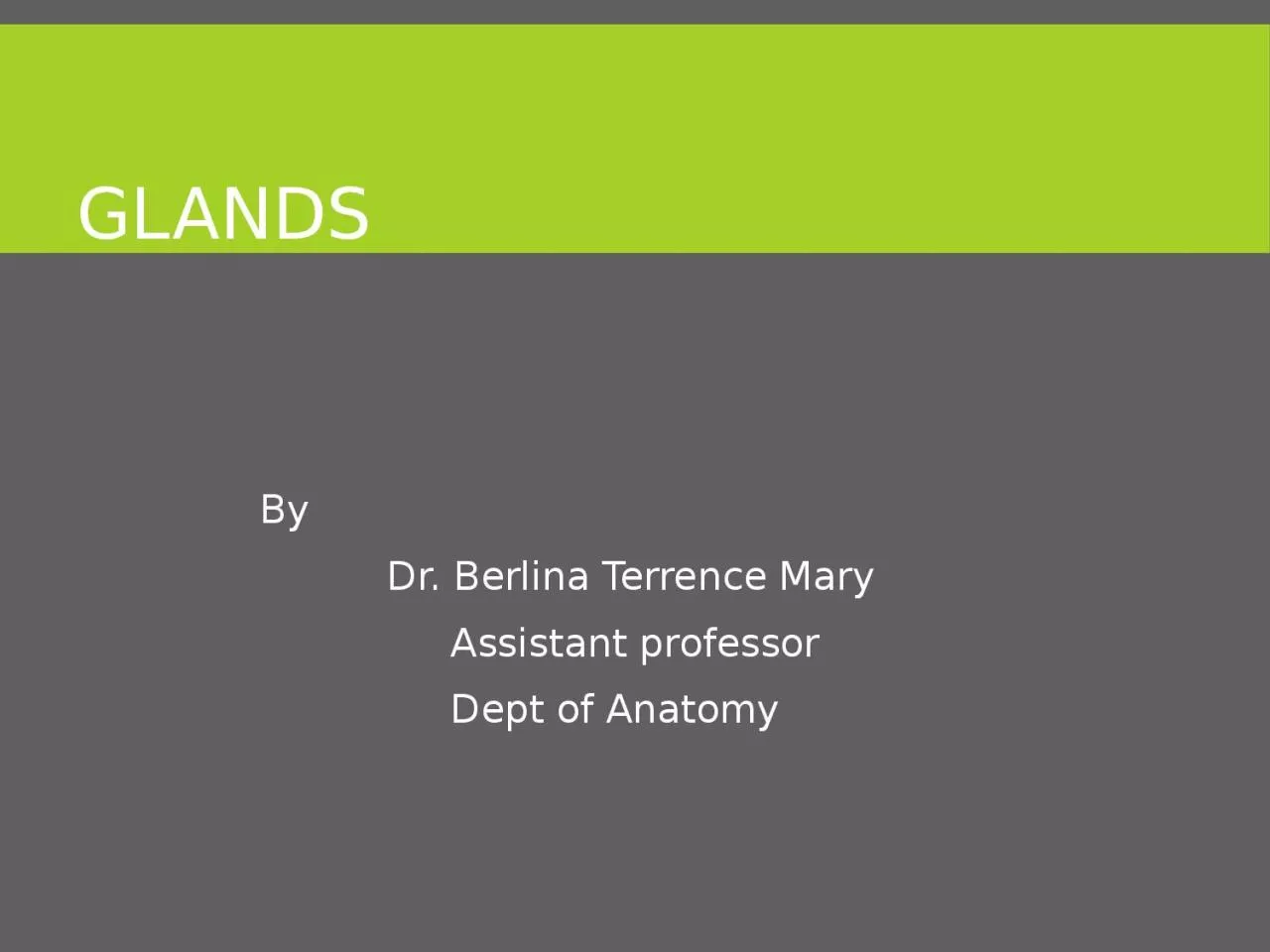

Terrence Mary Assistant professor Dept of Anatomy Glands Some epithelial cells may be specialised to perform a secretory function Such cells present singly or in groups constitute glands ID: 917560
Download Presentation The PPT/PDF document "Glands By Dr. Berlina" is the property of its rightful owner. Permission is granted to download and print the materials on this web site for personal, non-commercial use only, and to display it on your personal computer provided you do not modify the materials and that you retain all copyright notices contained in the materials. By downloading content from our website, you accept the terms of this agreement.
Slide1
Glands
By
Dr.
Berlina
Terrence Mary
Assistant professor
Dept of Anatomy
Slide2Glands
Some epithelial cells may be
specialised
to perform a
secretory
function. Such cells present singly or in groups, constitute glands.
Based on structure--- unicellular,
multicellular
Unicellular are interspersed among other epithelial cells.
Eg
. Lining the intestines.
Multicellular
- develop as
diverticulae
from epithelial surface.
Slide3Exocrine glands or externally secreting
glands – put their secretions into an epithelial surface, directly or through ducts.
Endocrine glands or internally secreting gland or ductless gland-glands lose all contact with the epithelial surface from which they develop, they pour their secretions into blood.
Slide4Simple gland – when all the
secretory
cells of an exocrine gland discharge into one duct.
Compound gland – no. of group of
secretory
cells, each group discharging into its own duct. These duct unite to form larger duct that ultimately drain into an epithelial surface.
Slide5Both (simple & compound) the secreting cells may be arranged:
a) Tubular –tube may be straight, coiled or branched
b) Acini – cells may form rounded sacs
c) Alveoli –flask shaped structures
Slide6Exocrine gland may be
Unicellular
Simple tubular
Simple alveolar or acini
Compound tubular
Compound
alveolai
Compound
tubulo
alveolai
Slide7Classification based on the nature of their secretion
Mucous gland – secretion contain
mucopolysaccharides
. Secretion collects in the
glial
parts of the cells. As a result nuclei are pushed to the base of cell & they flattened
Protein secreting cells
Mucin
secreting cells
Steroid producing cells
Serous gland- protein in nature, nuclei are centrally placed.
Slide8Classification – basis of manner in which
their secretion are poured out of cells
Merocrine
or
eccrine
/
epicrine
- secretions thrown out of cells by the process of
exocytosis
, the cell remaining intact .
Apocrine
– apical parts of the cells are shed off to discharge the secretion.
Eg
. Atypical sweat glands, mammary gland.
Holocrine
– entire cells disintegrates while discharge its secretion.
Eg
. Sebaceous gland
Slide9Glands divided into lobes
Intralobular – lying with in the lobule.
Interlobular –lying in the interval between lobules .
Interlobar
– lying between adjacent lobes
Slide10Exocrine gland - rich
bloood
supply, their activity is under nervous or hormonal control
Endocrine gland – rich network of blood, capillaries or
sinisoids
.
Neoplasm can arise from the epithelial
linning
of gland.
Adenoma – benign growth arising in a gland.
Adenocarcinmoma
- malignant growth.